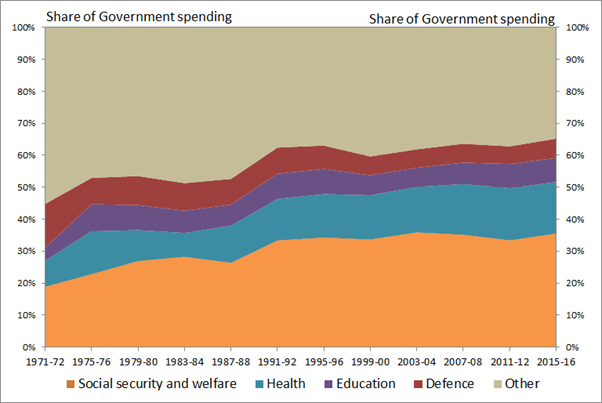There is an old joke about a tourist in Ireland who asks a local for directions to Dublin. The Irishman replies: ‘Well sir, if I were you, I wouldn’t start from here’.
Treasurer Morrison could find some insight from that joke in crafting the upcoming budget. The wisdom of the Irishman is: “If you want a decent budget, don’t start with the old one.”
Traditionally, each budget is a variation of the previous one. The Treasury boffins first set out the same spending and taxing as last year, then Ministers fiddle around the edges. If the Government is bold there might be a reform that noticeably changes a particular tax or spending item, spending may be tweaked up or down, and an old program might be rebadged as a new program. But in the absence of such intervention, the spending and taxing we get this year will be the same as the spending and taxing we got last year.
Advertisement
Repeating such an incremental and conservative approach to budgeting is a mistake. It preserves taxing and spending that to belong to history and should not continue. What is needed, at least once every couple of decades, is to start from scratch. Throw out the old budget and formulate plans for taxing and spending that make sense without reference to history or the current approach. Combine an analysis of where you want to be overall (top-down budgeting) with an analysis of specific programs and taxes (bottom-up budgeting). And accept that this process will be iterative and needs to be politically saleable.
Top-down budgeting
In formulating the upcoming budget, the Government should come to a view on the appropriate size of government. That is, the Government should reject the lazy approach of simply accepting the current size of government as appropriate.
To help with this, the Government should look at the size of government in successful foreign countries, and in Australia during successful periods of our past.
Such top-down budgeting would be assisted by the publication of accurate figures on Australia’s size of government through history. The Budget in May will be the first to do this; in exchange for my vote to re-establish the Australian Building and Construction Commission, the Government agreed to publish key spending and tax figures in the budget in real per capita terms. Because of this, we will be able to accurately see the size of government in the Hawke Keating period, or in the Howard years. Anyone who yearns for a return to those governments will have a clear benchmark to aim for.
And whatever size of government Treasurer Morrison deems to be appropriate, this could be legislated. So if spending ever looks like going over the limit, automatic across-the-board spending cuts would kick in.

Advertisement
After setting its target for the size of government, the next stage of top down budgeting would involve the Government coming to a view on the appropriate share of spending between various areas like defence and health.
Welfare spending has risen from 23 per cent of total spending at the end of the Whitlam era to 35½ per cent now. Even if the Government was comfortable with fixing the share of welfare spending at this elevated level, such a commitment would still provide budget discipline. Welfare spending is currently projected to rise to 37 per cent of total spending over the next two years.

Discuss in our Forums
See what other readers are saying about this article!
Click here to read & post comments.
2 posts so far.